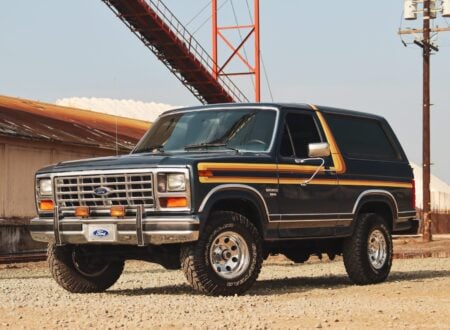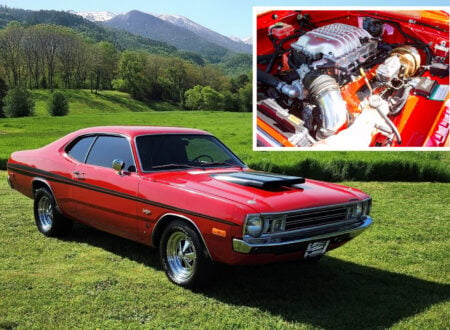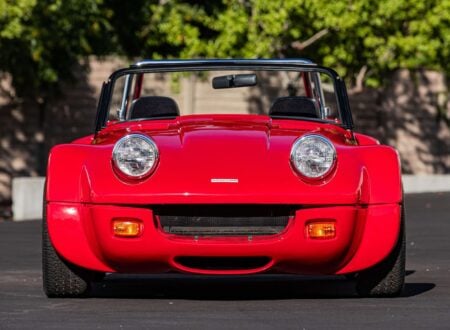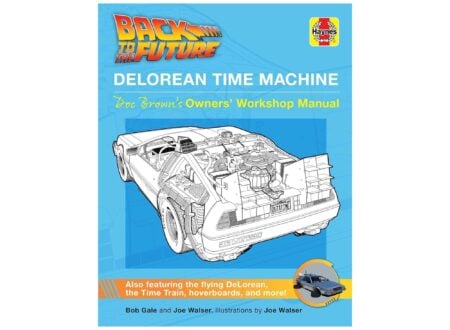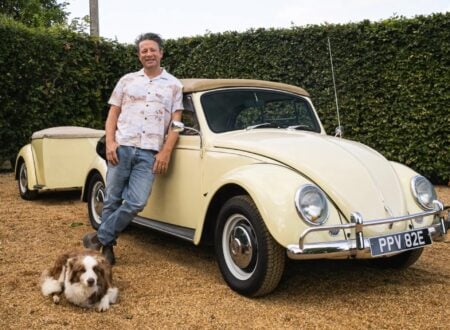This 1971 Range Rover has been through a comprehensive rebuild which included the fitment of new axles, suspension, brakes, and perhaps most importantly, the transplanted V12 from an Aston Martin DB7 producing 420 bhp.
The addition of a Union Jack blowing in the wind painted across the hood and front fenders only add to the Britishness, of what is possibly the most British four wheeler we’ve ever featured on Silodrome.
Fast Facts – A Range Rover With An Aston Martin V12
- This 1971 Range Rover has undergone a significant rebuild, it included replacing the axles, suspension, and brakes, as well as the installation of a V12 engine sourced from an Aston Martin DB7, capable of producing 420 bhp. This engine swap required extensive modifications to the chassis and firewall, all of which were completed in-house by Bishops 4×4.
- The transformation was developed and executed by Bishops 4×4, a Land Rover, Range Rover, and Jaguar specialist located in Peterborough, England. The firm undertook the project as one of their most ambitious custom builds to date, building a custom Range Rover that could have rolled out of Q Division for James Bond in the 1970s.
- The Aston Martin V12 was fitted to the Vantage DB7 which debuted in debuted in 1999 to replace the earlier DB7 which had been powered by a supercharged straight-six. The V12 was a 6.0 liter unit with double overhead cams four valves per cylinder, and an aluminum block and heads. Output was 420 bhp at 6,000 rpm with 400 lb ft of torque at 4,000 rpm.
- The Range Rover now features an upgraded interior with re-trimmed leather seats, deep wool carpeting, a custom wooden dash, and modern digital displays. It’s set to be auctioned by Iconic Auctioneers on May 18th, with an estimated price much lower than the cost of the build.
How To Fit A V12 In a Range Rover Classic
It was Chris Bishop of Bishops 4×4 who, when discussing a Range Rover restoration candidate they had in stock over a few after work beers, got to thinking about doing the impossible: sticking an Aston Martin V12 into the engine bay, and creating the sort of Range Rover that the Q Division might have built for James Bond back in the early 1970s.
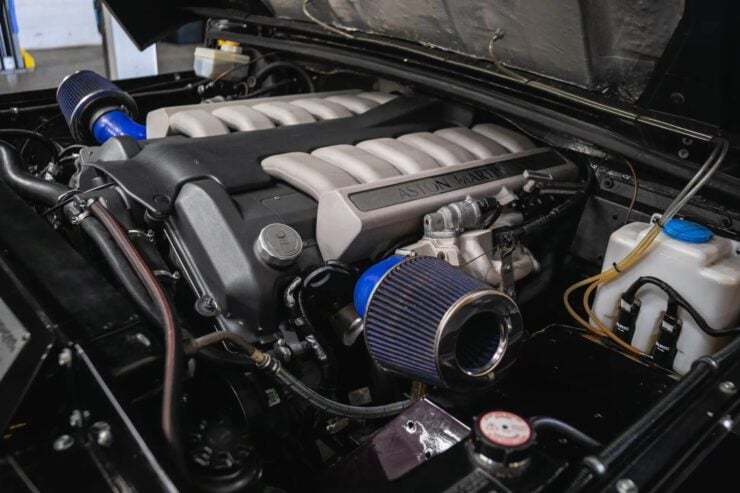

Bishops 4×4 is a Land Rover, Range Rover, and Jaguar specialist based in the town of Peterborough, in the district of Cambridgeshire, England. Though the company’s bread and butter is working on customer cars with servicing and repairs, they also have a wing dedicated to custom builds of both vintage Land Rovers and Range Rovers.
The project to build the car you see here is their most ambitious to date, and one of the most ambitious Range Rover Classic rebuilds we’ve ever seen. The chassis and body needed to first be restored and prepared for the modifications, and the front chassis rails needed to be modified to take the V12, which is notably larger than the 3.5 liter Rover V8 which was originally fitted.
Squeezing this engine into the engine bay was no mean feat, it required countless hours of modifications including a significantly reworked firewall to slot the engine into place with enough clearance out in front for the radiator. Once the engine was in place, the automatic transmission was bolted into place, sending power to stronger Defender-type axles front and back fitted with heavy-duty springs and Bilstein shock absorbers.
The Aston Martin DB7 V12 was originally fitted to the Vantage model which debuted in debuted in 1999 to replace the earlier DB7 which had been powered by a supercharged straight-six. The V12 was a 6.0 liter unit with double overhead cams four valves per cylinder, and an aluminum block and heads. Output was 420 bhp at 6,000 rpm with 400 lb ft of torque at 4,000 rpm.
As far as we have been able to tell, no one has ever even attempted to fit a DB7 V12 into a Range Rover Classic, so the team at Bishops 4×4 really had to write the rule book as they went along. They make a note of explaining that they worked hard to make the engine fitment look as close to a factory job as possible, and they fitted the quad headlight arrangement as an homage to Schuler and Overfinch, the OG Range Rover modification specialists.
The engine used in this build was sourced from a wrecked DB7, though fortunately the engine wasn’t damaged in the accident. It’s not being run via a pair of tuneable ECUs, one for each bank of six cylinders, these were then mapped to the Aston Martin factory ECU.
The interior of the vehicle has been reworked to match, with the seats re-trimmed in soft brown leather and thick brown wool carpeting installed throughout. A wooden Wood and Pickett dash was then sourced and installed, with an Aston Martin push button starter, and a digital display for showing the speedometer, tachometer etc.


The air brushed Union Jack across the front of the car is remarkably detailed, offering a hint that this is something a little more than a standard Range Rover Classic. That said, the distinctive rumble of the DB7 V12 lets everyone know that this is no run-of-the-mill Rover V8 powered vehicle from at last a city block away.
The completed vehicle is now due to roll across the auction block with Iconic Auctioneers on the 18th of May with a price guide of £30,000 – £40,000, or approximately $37,557 USD – $50,075 USD, this is is considerably less than the cost to build it. If you’d like to read more or register to bid you can visit the listing here.
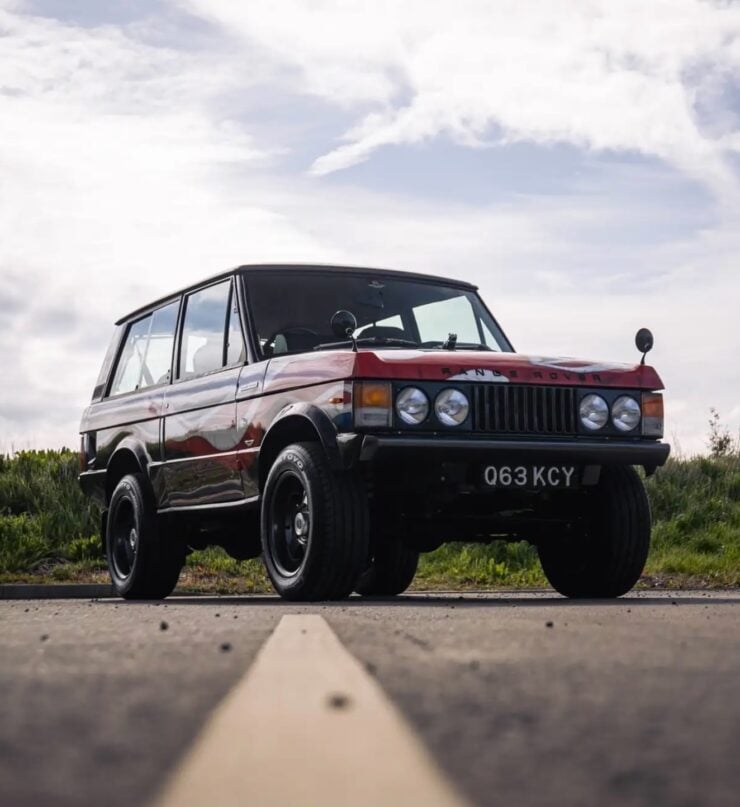
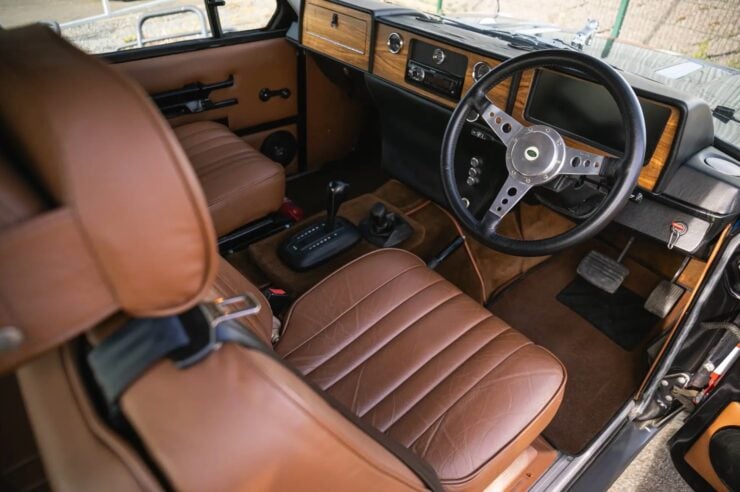

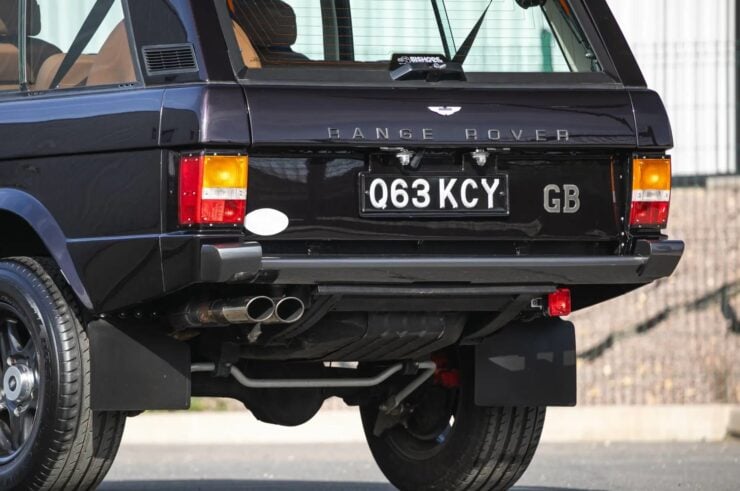
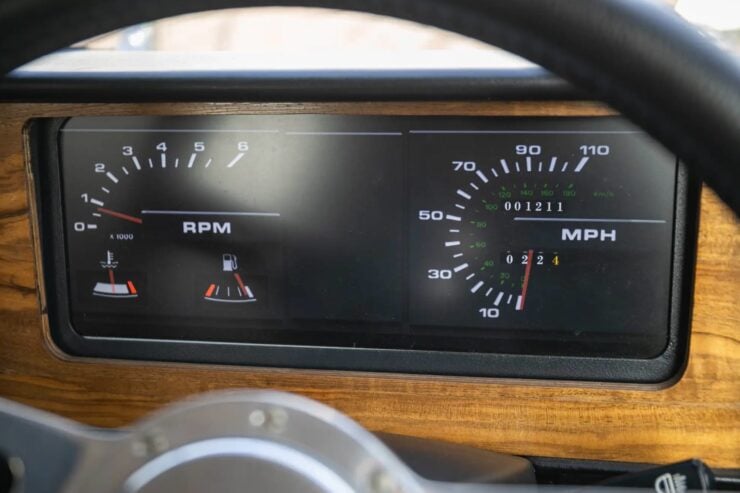
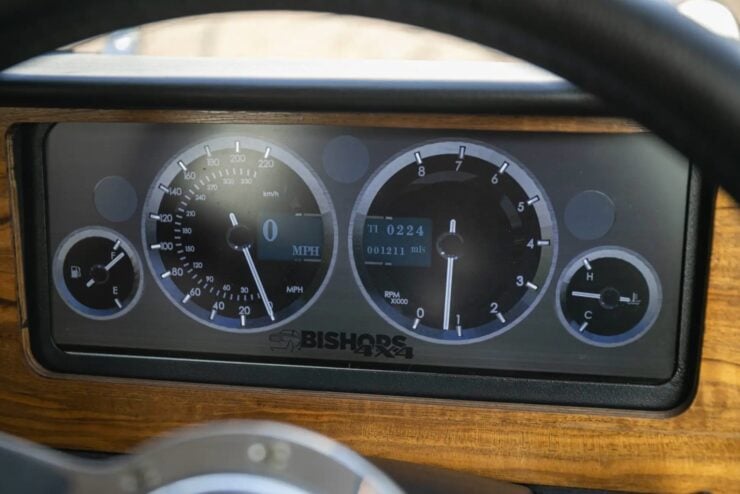
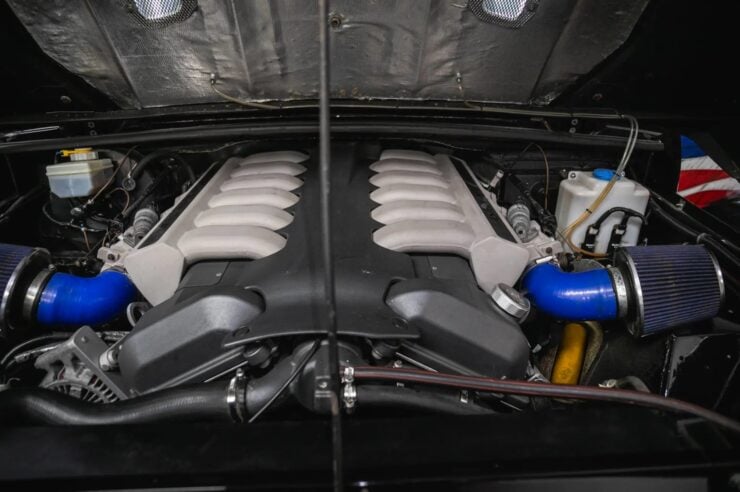

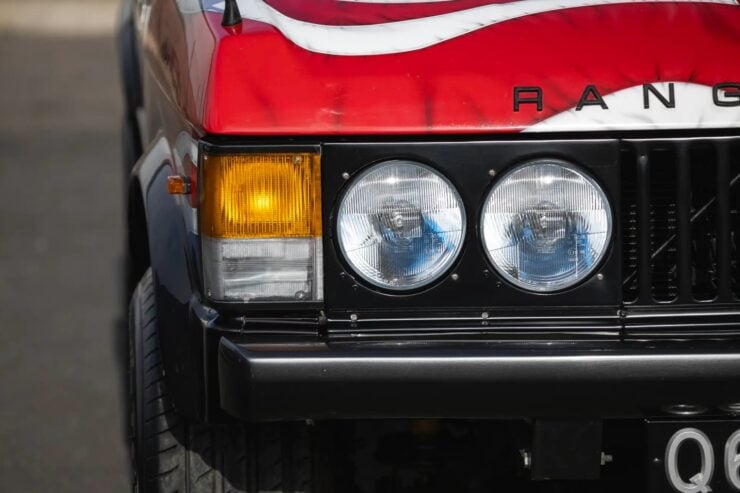
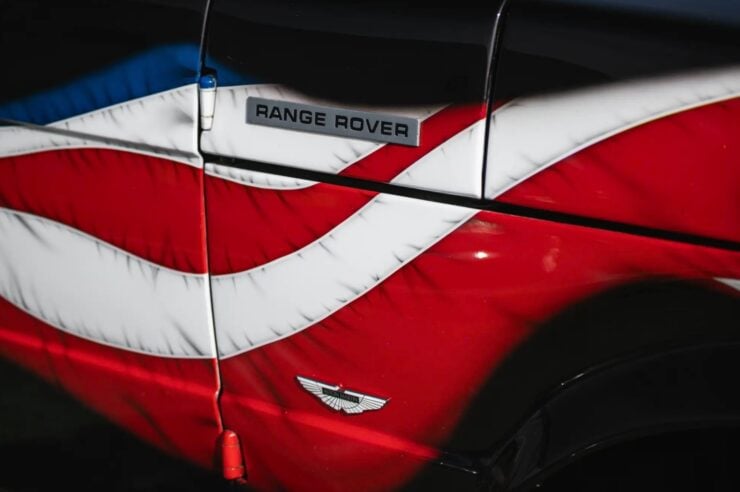
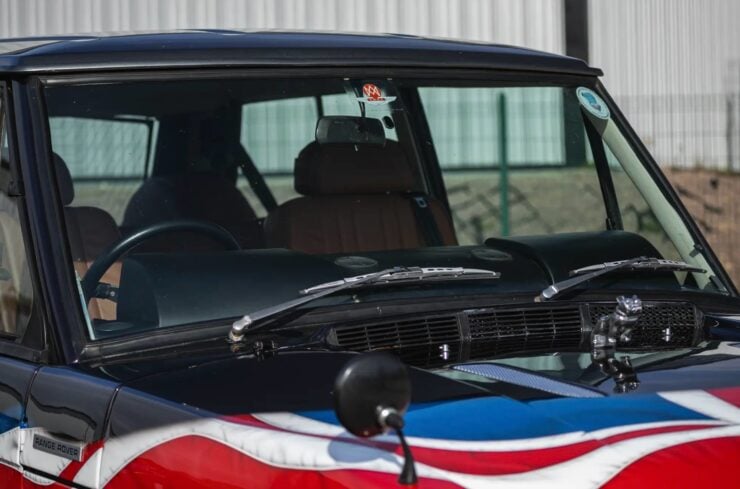
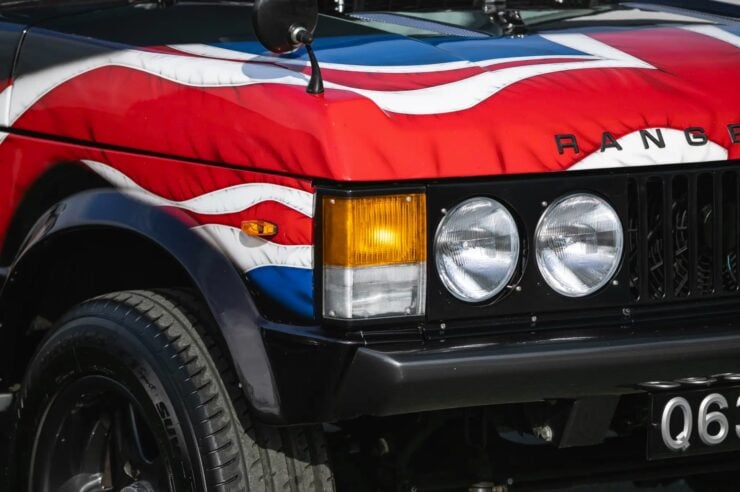
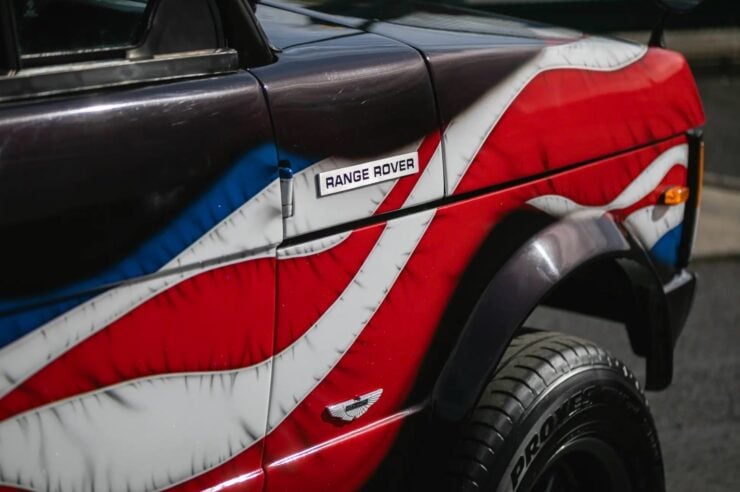
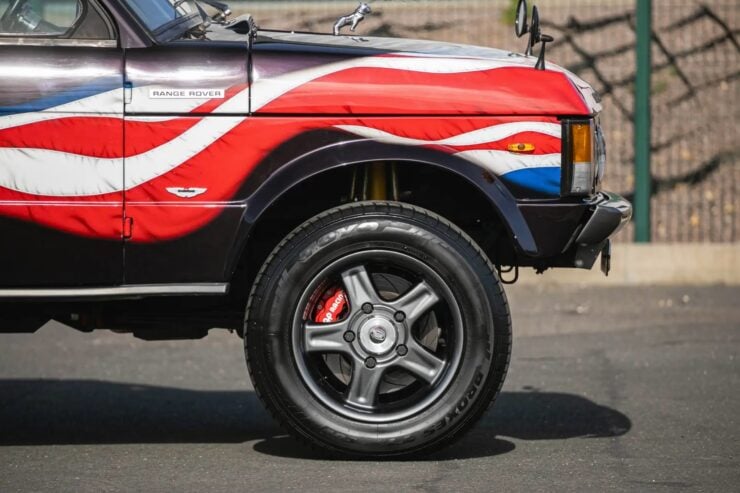
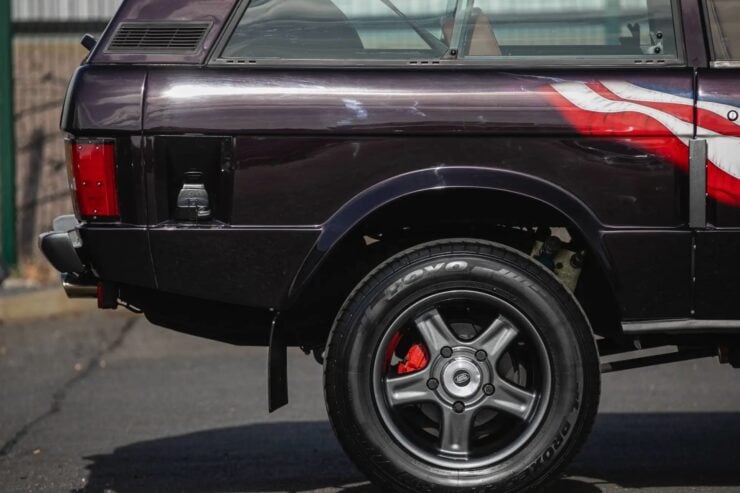
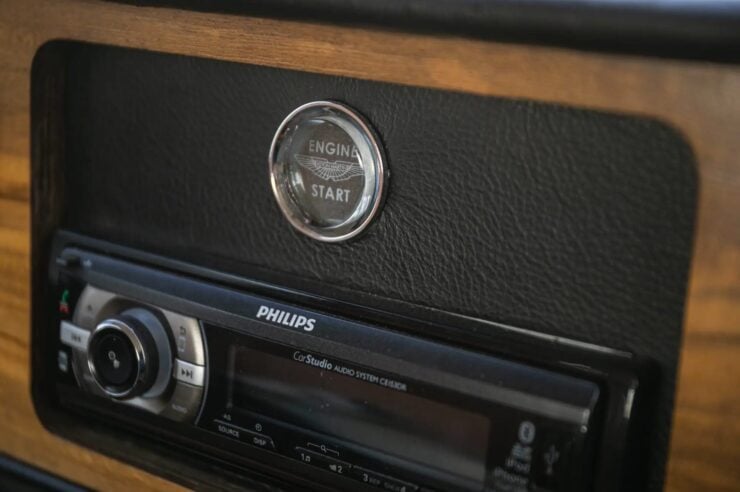
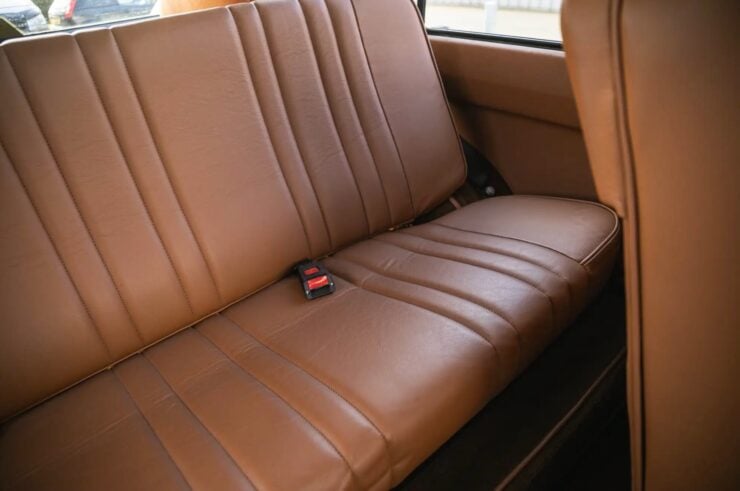
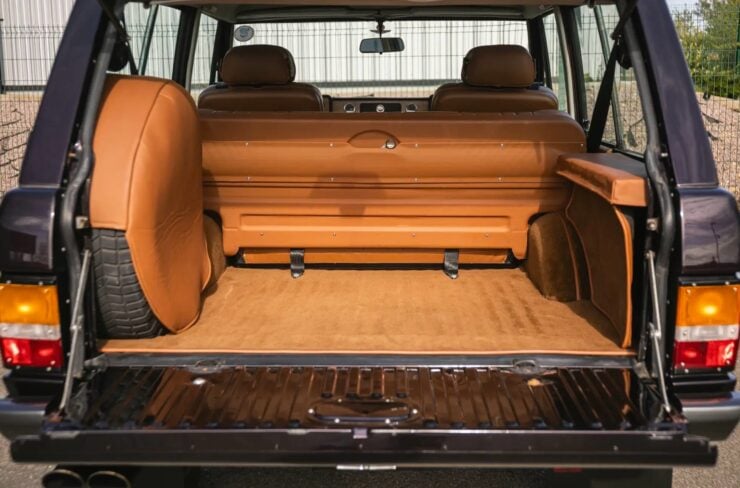
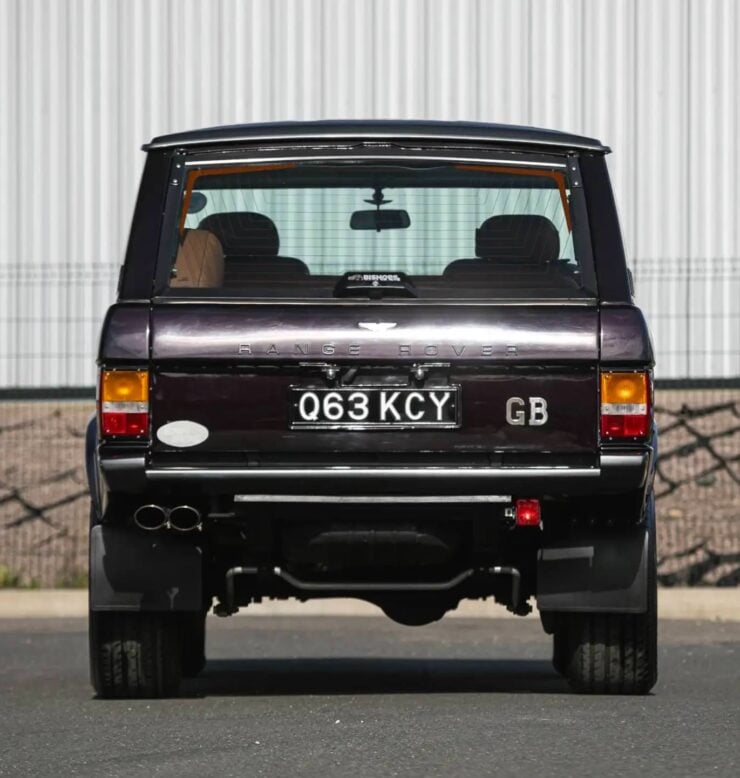
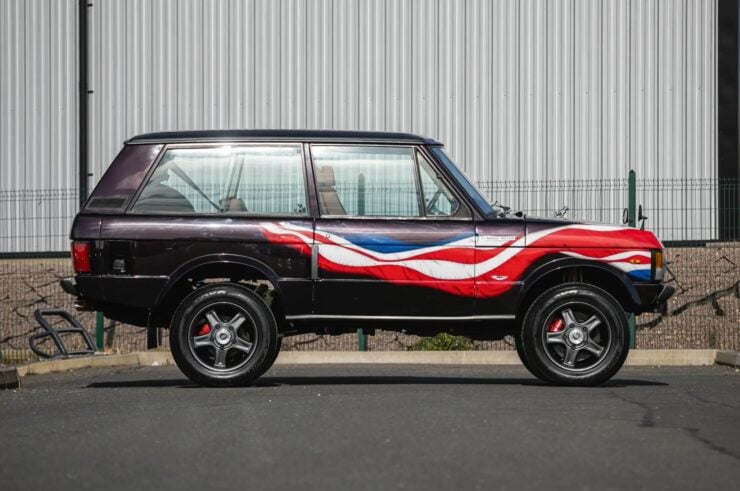

Images courtesy of Iconic Auctioneers




